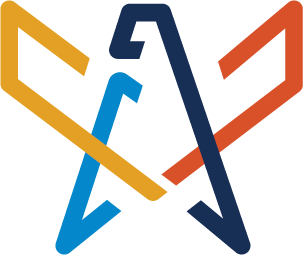Teacher Feature: December 2023
Jennifer Tupa
4th Grade Teacher
New Creek Primary School
Mineral County, West Virginia
Jennifer presented at the STEM Teacher Leadership Academy in 2023 and was a member of the 2024 cohort!
1. It sounds like you're a career switcher. Can you describe your former role within the military and what the transition to teaching was like?
Prior to teaching, I spent 9 years in the US Army Reserves as an Intelligence Analyst. 4 of those years were in active-duty status. During my active-duty time, I was stationed in Fort Knox, KY at the 11th Aviation Command. When I went back to reserve status, I moved to a unit at Aberdeen Proving Grounds, just north of Baltimore, MD. While there, I worked in a Technical Intelligence unit, studying weapon systems. I loved my time in the Army, but after 9 years, I realized my passion was in educating children, and I made the switch to teaching.
As strange as it might sound, being a soldier prepared me for being a teacher in so many ways. The Army taught me the meaning of professionalism, hard work, and dedication. Teaching (as we all know) can be an incredibly stressful profession, that requires great communication skills, organizational skills, and leadership skills. Being an intelligence analyst at a command level required me to brief high level officers on critical information, communicate with soldiers of all ranks to manage various projects, and to communicate effectively to the soldiers on my teams to guide them through tasks. I have used those communication skills time and time again in my teaching career. Organization was also a crucial aspect of being a soldier. One of the first things they teach you in Basic Training is to be at the right place, in the right time, in the right uniform, with the right attitude. Aside from the uniform part, I have found myself saying those exact words to my students many times. When I was stationed in Fort Knox, I was part of a small team of people that managed the physical security of the aviation assets for the entire US Army Reserves. This experience helped me develop leadership and management skills that have proved invaluable for spearheading STEM initiatives in my current district. This brief synopsis is only a small portion of the skills I acquired during my time in the service that I currently employ.
2. It sounds like you are leading professional development opportunities for other STEM teachers in your region. What's your favorite part about leading workshops for teachers?
I am deeply passionate about two things- science education and connecting teachers with the resources they need to be better science educators. For years, we have seen a large gap in reading and math skills that has led to a systemic misconception: that all resources (time, quality curriculum, etc.) must be placed into reading and math instruction. While this gap is important, and must be addressed, we seem to have forgotten that the most effective way to engage students in meaningful learning is by giving the math and reading/writing skills an authentic setting: science.
Connecting teachers with resources like STARLAB (thanks to the invaluable educational partnership with AFOSR) and showing them how easy it is to incorporate engaging science education into their instructional practice during training sessions is one way I am trying to impact the future of science education in my district, and help students prepare to engage in a STEM—ready workforce. I recently attended the West Virginia Science Teacher's Association's Annual Conference, and I am excited to bring even more cross-curricular resources and training opportunities to my district.
3. What has been your favorite lesson, activity, or project that you've shared with students in the past year?
I recently developed a multi-day lesson that teaches students how to tell the difference between a regular constellation and a circumpolar constellation by tracking the movement of stars in STARLAB. It incorporates the use of a great children's book called "The Sky is Full of Stars" by Franklyn M. Branley, along with graphing, researching Greek mythology, and publishing their own flip books, before using STARLAB to present about a constellation. I love this lesson because I think it demonstrates how easy it is to incorporate a plethora of ELA and math standards into a science lesson.
4. What is one resource (online or print) that has totally changed the way you teach? Or, what is something that you have found inspirational as you plan out projects or lessons for students?
If I had to choose one resource to share, I would recommend checking out the National Science Teachers Association (NSTA) at nsta.org. They have amazing resources to help you unpack the NGSS and find ways to incorporate science into your daily instruction. For elementary educators, I particularly love their "Picture Perfect" science books! They are packed full of amazing lessons and units that cover a multitude of standards and subjects. Their professional development opportunities are outstanding as well.
Thank you so much, Jennifer!


